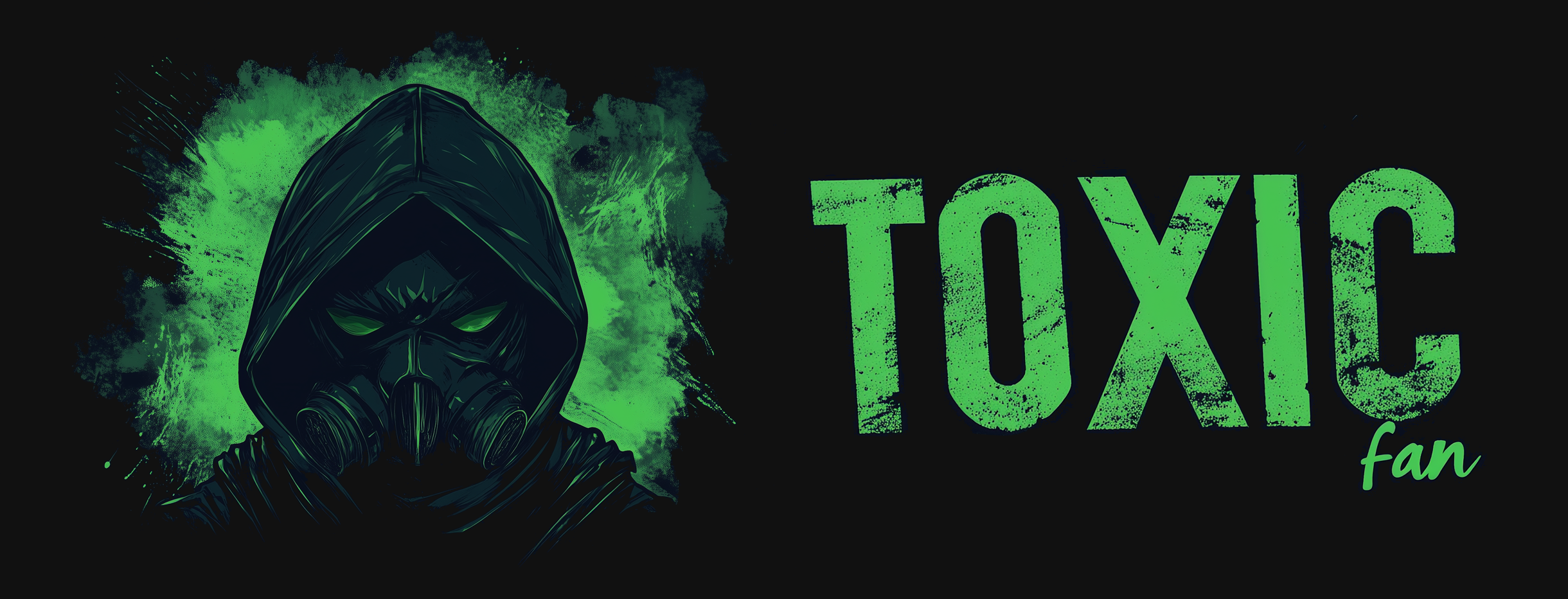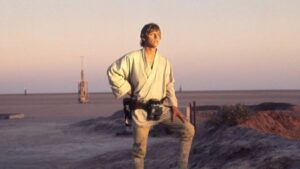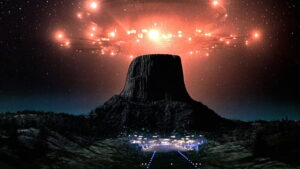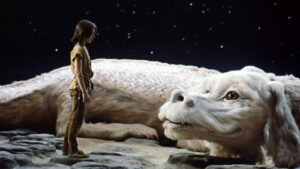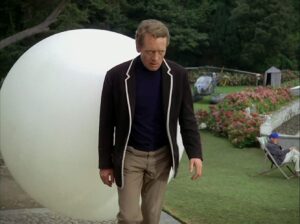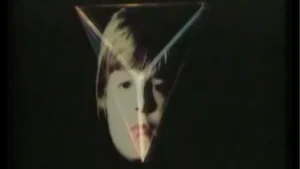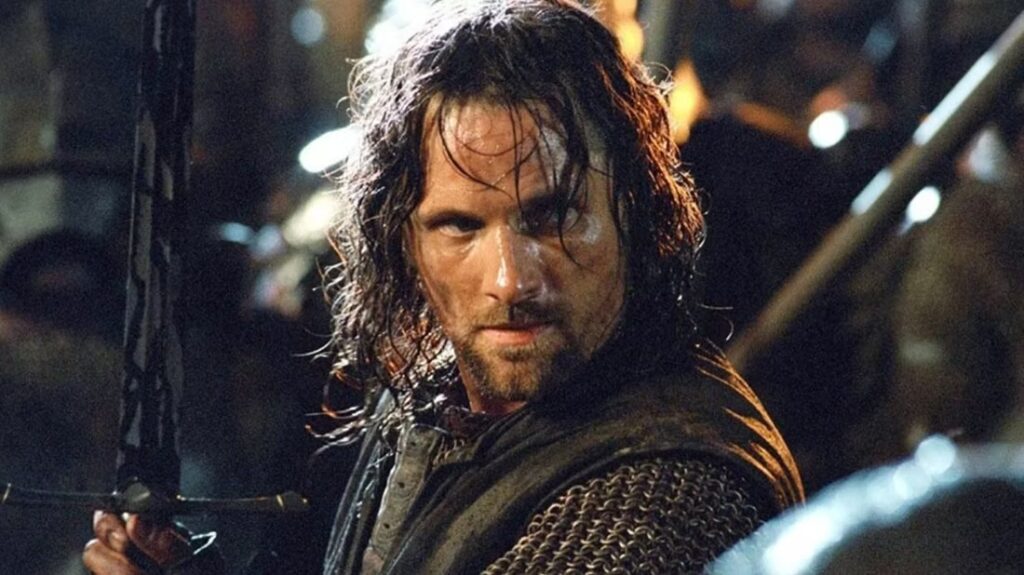
Viggo Mortensen as Aragorn in the Lord of the Rings: The Two Towers. Photo Credit: New Line Cinema
Remember how “The Fellowship of the Ring” left us hanging like Gandalf on that bridge in Moria? Well, strap in, fantasy fans, because “The Two Towers” is here to crank the epic meter up to 11. Peter Jackson’s second installment in the Lord of the Rings trilogy doesn’t just avoid the middle child syndrome – it gives it a wedgie and steals its lunch money.
A Tale of Two (or Three, or Four) Storylines
If “Fellowship” was about getting the band together, “The Two Towers” is about the world’s most intense group project breakup. Our heroes are scattered faster than hobbit feet on hot sand, each embarking on their own perilous journey.
Frodo and Sam continue their trek to Mordor, now with the world’s most tragic case of split personality, Gollum, as their guide. Meanwhile, Aragorn, Legolas, and Gimli are running a Middle-earth marathon to save Merry and Pippin, who’ve been kidnapped by Uruk-hai (because apparently, hobbits are the new hot commodity in evil circles).
Newcomers and Scene-Stealers
“The Two Towers” introduces us to some fresh faces that quickly become fan favorites. Enter Gollum, the CGI wonder that made audiences forget they were watching pixels instead of a real… whatever Gollum is. Andy Serkis’s performance captures both the pitiable Sméagol and the conniving Gollum so convincingly, you’ll find yourself rooting for and against him in the same scene.
Then there’s Théoden, King of Rohan, who goes from decrepit puppet ruler to inspiring leader faster than you can say “exorcism by wizard.” Bernard Hill brings gravitas to the role, making Théoden’s transformation one of the film’s most satisfying arcs.
Battle of Helm’s Deep: The Ultimate Soggy Showdown
If there’s one sequence that defines “The Two Towers,” it’s the Battle of Helm’s Deep. This rain-soaked slugfest is the “Saving Private Ryan” of fantasy warfare. For a solid 40 minutes, we’re treated to an onslaught of Uruk-hai that makes rush hour traffic look like a leisurely stroll.
Peter Jackson orchestrates chaos with the finesse of a conductor leading a philharmonic of violence. Arrows fly, swords clash, and elves perform gravity-defying feats that would make Olympic gymnasts weep with envy. It’s a testament to Jackson’s skill that even amidst the frenzy, we never lose sight of our heroes or the stakes at hand.
Treebeard and the Ents: Guardians of the Galaxy, But Slower
In a movie full of fast-paced action, the Ents provide a… deliberate… counterpoint. These walking, talking trees move with all the urgency of a DMV line, but when they finally decide to act, it’s like watching a logging company in reverse. The destruction of Isengard is a satisfying payoff to what felt like an eternity of arboreal debate.
The Technical Stuff: Making Magic Look Easy
Once again, Weta Digital proves that they’re the real wizards of Middle-earth. The CGI has only improved since “Fellowship,” with Gollum setting a new standard for motion-capture performance. The blend of practical effects, miniatures, and digital wizardry creates a world that feels tangible, lived-in, and perilous.
Howard Shore’s score continues to be the emotional backbone of the series. From the haunting “Evenstar” theme to the thunderous music of Rohan, Shore’s compositions elevate every scene they accompany.
Themes: It’s Getting Dark in Here
“The Two Towers” delves deeper into the moral complexities hinted at in “Fellowship.” The corruption of power, the nature of loyalty, and the blurred lines between good and evil are all explored with nuance. Faramir’s struggle with the temptation of the Ring and Frodo’s growing burden showcase the insidious nature of Sauron’s influence.
Why It Works: The Empire Strikes Back of Fantasy
Much like “The Empire Strikes Back” did for Star Wars, “The Two Towers” takes the foundation laid by its predecessor and builds a richer, more complex narrative. It expands the world, deepens the characters, and raises the stakes to nail-biting levels.
The film manages to juggle multiple storylines without losing coherence, a feat as impressive as Legolas’s shield-surfing skills. Each plot thread feels essential, contributing to a tapestry of a world on the brink of darkness.
In Conclusion: The Perfect Middle Child
“The Two Towers” proves that middle installments don’t have to be mere bridges between beginning and end. It’s a monumental achievement in its own right, pushing the boundaries of what fantasy cinema can achieve.
As the film ends with Sam’s stirring speech about the stories that really matter, we’re left in awe of the journey so far and in eager anticipation of the conclusion. “The Two Towers” doesn’t just avoid the middle movie slump – it sets a new high-water mark for the trilogy and leaves us wondering: how can they possibly top this?
Well, we’ll just have to wait for “The Return of the King” to find out. But that’s another story, for another time.
